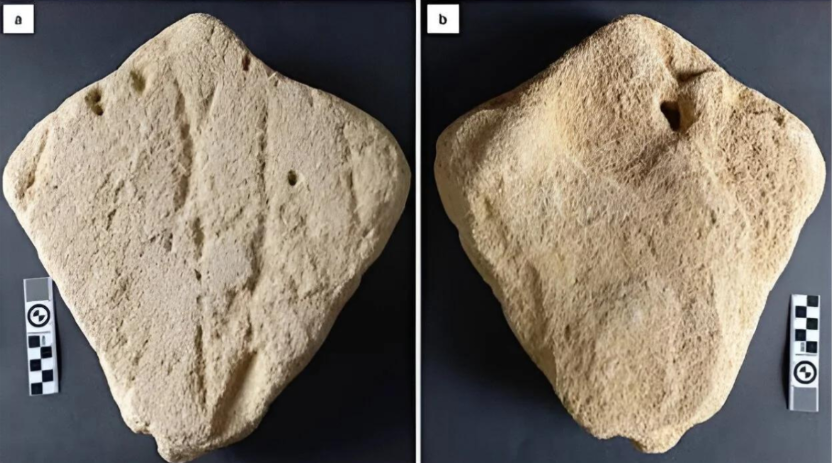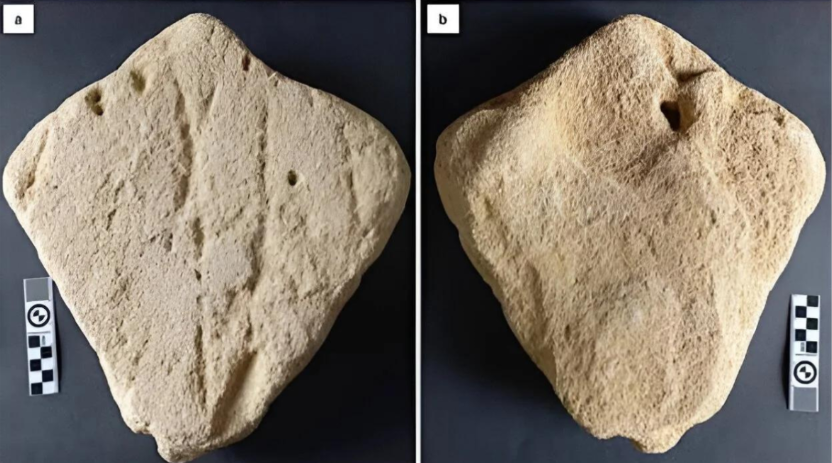A 130,000-year-old stingray sand sculpture on South Africa’s coast may be the world’s oldest animal art.
Others are reading now
In a groundbreaking discovery on South Africa’s coast, researchers have stumbled upon what could potentially be the world’s oldest piece of animal art—a sand stingray sculpture dated to about 130,000 years ago.
This sculpture, crafted from aeolianite rock, was found east of Still Bay on South Africa’s coast, approximately 205 miles (330 kilometers) from Cape Town. The rock’s symmetrical shape and distinct grooves suggest it may be a man-made depiction of a local blue stingray, minus the tail. This find challenges previous records, offering new insights into the origins of artistic expression in human history.
A Monumental Find
The unusual symmetry and detailed surface of the rock led researchers to speculate that it could be an intentional creation rather than a natural formation.
“Symmetry is always intriguing, and can have a number of origins, only one of which is human,” stated Charles Helm, a paleontologist at Nelson Mandela University, and Alan Whitfield, the Emeritus Chief Scientist at the South African Institute for Aquatic Biodiversity.
Also read
“But it always begs for an explanation, and such multiple levels of symmetry support a hominin origin: the possibility that the combination of multiple symmetrical features is due to chance alone is, in our view, remote.”
The presence of symmetrical grooves and the kite-shaped form of the rock, combined with its location on a beach, strongly supports the hypothesis of a human or hominin origin. The stubbed base of the stone is thought to represent where a tail might have been ceremonially removed, adding to the complexity and potential cultural significance of the sculpture.

Optically stimulated luminescence dating of neighboring rocks provided an astonishing approximate age of 130,000 years, far predating any known animal art.
The team behind the discovery introduces the possibility that the sculpture may be an ammoglyph: A tracing in sand that has turned to stone over millennia.
“This is the first and thus far the only example that suggests tracing from this time period. The chances of something like this being preserved and amenable to our interpretation are remote, so it is possible that this may be the only example ever identified, but we can always hope that more will become apparent,” Helm, the study’s lead author, told IFLScience.
Rewriting Artistic Ancestry
This purported stingray sand sculpture would not only be the oldest known piece of animal art but also represents a significant leap backward in time for the origin of artistic representation by humans or their ancestors. As a point of comparison, the oldest known piece of certifiable animal art is a 43,900-year-old cave painting of a warty pig found in Indonesia.
Although the legendary Lion-Man sculpture, discovered in Germany’s Hohlenstein-Stadel cave and dating back 40,000 years, has been celebrated as the earliest known animal representation, carved from mammoth ivory, the discovery of the stingray sand sculpture potentially rewrites the timeline for artistic depictions of animals by humans.
The Original Canvas
Western European rock art, which burst onto the scene around 40,000 years ago, seemed to emerge suddenly, mostly following abstract symbols from various locations worldwide. This leaves a gap of approximately 90,000 years between the creation of the proposed stingray sand sculpture and the appearance of such art in European caves, notably France’s Chauvet Cave.
The idea that the world’s earliest art was made in sand, using it as the original canvas, suggests that there was ample time for these artistic skills to develop over millennia. The researchers suggest the absence of similar art in the archaeological record may be due to the scarcity of suitable rocks from the intervening periods.
Art plays a crucial role in human life, making theories about its origins and evolution significant to many. The researchers posit that if their findings are accurate, it would not only extend the timeline of when our ancestors first started creating art depicting other species but might also shed light on the previously mysterious sudden emergence of sophisticated cave art in Western Europe.
While the conclusions remain speculative, and the alleged stingray sand sculpture might look like an ordinary rock to the untrained eye, it could potentially claim a distinguished place in the cultural history of our species.


